Search engines have become integral to our everyday lives. Google has even become a verb in the English language. Every business, therefore, needs to pay attention to their search engine ranking. One way to do this is through search engine optimisation (SEO).
For knowledge base articles, it’s crucial that they appear in search results when customers are looking for help. You’ve likely spent a lot of time getting your knowledge base right. Time that will go to waste if your articles cannot be discovered – and 93% of all web traffic comes via a search engine. Therefore, SEO is as important to your knowledge base’s success as the content itself.
Paid advertising is one option for companies looking to jump to the top of search results. But it still isn’t as effective as improving organic search rankings through SEO. Almost 80% of searchers say they completely ignore paid search ads.
There are many search engines, such as Bing, Yahoo and DuckDuckGo. But the mammoth in the industry is (obviously) Google. Therefore, most SEO strategies are geared for Google because over 63% of online search occurs on this platform. But if you improve your knowledge base SEO on Google, it will likely get a boost on the other search engines as well.
What’s included:
- Technical versus content SEO
- Technical SEO tips and tricks
- How to optimise your knowledge base content
- A work in progress
Technical versus content SEO
SEO is broken down into two main areas known as technical SEO and content SEO. You can think of technical SEO as the activities that underpin the rest of your knowledge base. Without a strong foundation laid through technical SEO, any efforts made with content SEO will be stifled. You need to start strong.
Technical SEO tips and tricks
Technical SEO lays the groundwork for the rest of your knowledge base SEO, so it’s incredibly important. It requires a certain level of coding knowledge and tech savviness, meaning you’ll probably have to consult an expert who really understands the intricacies of technical SEO.
Put your mobile first
Probably the largest change in technical SEO in recent years came when Google implemented an algorithm change that only ranked mobile responsive websites in mobile search results. Dubbed mobilegeddon, the change means that if your knowledge base isn’t responsive it won’t appear at all for smartphone users. The vast majority of people now search for things via their phones, so this is a significant part of your user base who could be missing out.
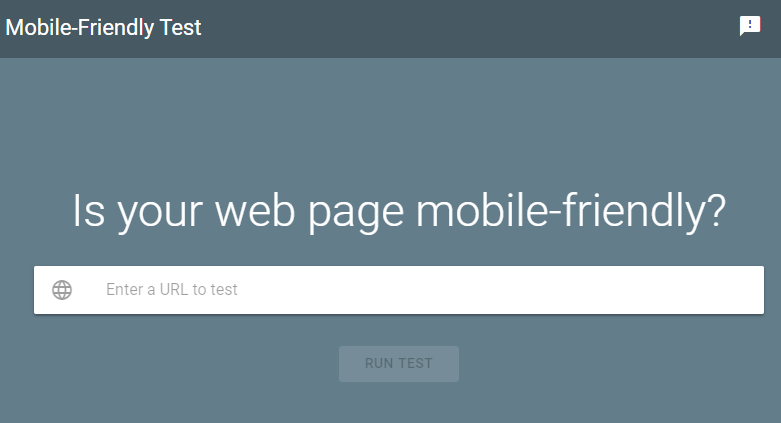
If you’re not sure if your existing knowledge base is mobile-friendly, then Google has created a free online tool that will tell you if it’s set up for mobile.
#1 Knowledge Management solution for growing teams.
Book a Demo
Speedy knowledge
For SEO, your website speed is everything. Ideally, your knowledge base should load within 3 seconds, which can be tough considering the amount of content, video, and image files that many knowledge bases contain. Web pages that take a long time to load are penalised by Google and experience a higher bounce rate (which negatively impacts SEO).
There are a few simple ways to improve the speed of your knowledge base.
- Use compressed images, HTML and CSS files to reduce the size of files that have to be loaded on your web page.
- Enable browser caching (to temporarily store data on a user’s computer).
- Reduce your server response time to under 200ms.
Audit regularly
After mastering your technical SEO, it’s vital that you don’t rest on your laurels. Do a regular audit of your knowledge base to check that it’s working effectively and not affected by any new algorithm changes. It should also be adapted to new technical specifications that arise. The rise of voice search through Siri, Cortana, and Alexa, for instance, is heralding a new mobilegeddon for SEO.
To help, the collaboration tool in Document360 helps you communicate with everyone involved in creating your knowledge base, including the SEO whizz who will be reviewing your code and content.
Use structured data to improve your ranking
Applying structured data means you use the markup from Schema.org in your knowledge base content. It’s a way of adding tags to your pages that tell search engines what type of information they contain. This works for all the major search engines – Google, Bing and Yahoo!.
Make your knowledge base easily searchable on the internet
Markup is simply how you format the text to convey a more human-like understanding of the content contained within, to search engine robots.
<itemtype> Specifying a particular item type (eg LocalBusiness)
<service> Specifying the type of service a business provides
Because this is a knowledge base, you are probably not interested in the markup for things like reviews or event listings (common markups for businesses). Instead, you want to mark up things like:
- Date content was published – Shows currency for your help content
- Software source code – highlights specific sections of content as software code
- Author – shows who has written or published the content
- Breadcrumbs – shows the folder structure of your content
- Sitelinks Search Box feature – allows users to make use of your knowledge base search right in the SERPs
- Site navigation markup – to uncover the structure of your site in the SERPs
Video – for video tutorials
Your knowledge base software should allow you to add custom code to your site. Talk to your developers about adding Schema markup to make your knowledge base portal more visible to search engines. You can also use Google’s Structured Data Markup Helper tool to automatically add markup to your content.
Use sitemap and robots.txt files
An XML sitemap is used by Google to find and index your web pages. Much like a real map, without it your knowledge base may not be discovered quickly by Google’s crawlers (bits of code that analyze your website) and may be indexed incorrectly.
After creating an XML sitemap, it should be submitted to Google’s search console. This tells the search engine to send its crawlers to visit your website. For good measure, you should repeat this whenever you’ve created a new knowledge base article or a new section of your knowledge base.
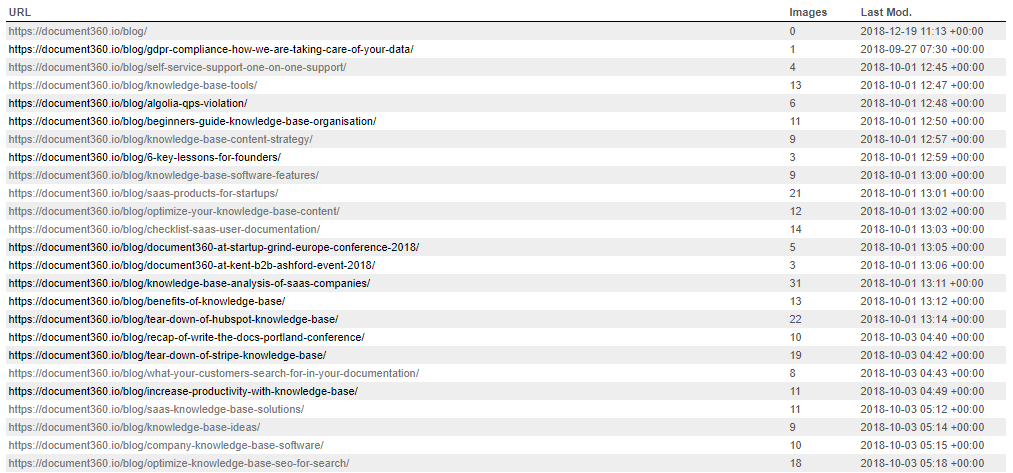

HTML sitemap
You can also use an HTML sitemap to improve the UX of your site (more on this later), which should be placed in the footer. This is written for humans and helps users to reorient themselves if they get lost.
Robots.txt
Robots.txt is another file that will tell search engines what it should (and, in this case, should not) index within your internal knowledge base. You can use it to exclude parts of your site that you don’t want to show up, such as your images, duplicate pages or internal search results pages.
If you don’t have one (check by typing your site URL in the browser followed by /robots.txt) you will have to create one manually. You can create a robots.txt file in any text editor, following Google’s instructions. Ask your developers to help you with this.
Technical structure
A lot of the SEO we’ve covered so far has been fairly technical, but there’s even more fine-tuning you can do to make sure your knowledge base is being indexed properly.
Alternative hreflang attribute
The alternative hreflang attribute indicates to Google that your page content refers to different language versions of the same page. Every language has its code – for example, “es-es” for Spanish or “en-us” for US English. Like this:
<link rel=”alternate” href=”example.com” hreflang=”es-es” />
It means that customers searching in a particular language will be shown in the corresponding page version. Use it in the on-page markup, HTTP header, or sitemap.
Duplicate content
Sometimes you may have pages in your knowledge base that contain the same content, which can damage the ranking for both pages. Duplicate content can be dealt with in many ways.
Try using a canonical link on each duplicate page inside the header to indicate to crawlers which is the original URL to index.
<link rel=”canonical” href=”http://yourcompany.com/page”>
You can also use a 301 redirect on the duplicate page which forwards to the original content page. It means that any inbound links going to duplicate pages are sent to one page, and will address any ranking issues.
301 redirects are done normally on the server side. How you implement a 301 redirect will differ depending on which platform you’re using for your knowledge base. If you’re using a SaaS solution, it should offer this capability in its settings.
Check out How to Maximize Your Document Article Visibility with SEO in Document360:
How to optimize your knowledge base content?
The other side of the SEO coin comes in the shape of content SEO. This is an ongoing process that needs to be incorporated in every knowledge-based article that you write. Because knowledge bases are content-heavy, this type of SEO offers a great opportunity for them.
Pick your keywords carefully
To begin with, you need to pick the keywords that will appear regularly in your articles. There are several ways to do this:
- Look at what terms your competitors are using (SpyFu is a good tool for this).
- Type search terms into Google and look at suggested related searches at the bottom of the page and in the automatic search term list that pops up under the search bar.
- Use Google Adwords to find the rankings for different search terms.

There are different kinds of keywords known as short and long tail. Long tail keywords are usually over 3-4 words long, and can include phrases such as “self-service knowledge base software”. Meanwhile, short tail keywords are only one or two words in length (for example “knowledge base”). Often, using a mix works best.
Pick a primary keyword and a few secondary ones to use throughout your knowledge base article. These can change from article to article, but there should always be a handful that you use consistently to rank highly for those terms. “Knowledge base” and “knowledge base software” are two examples used by Document360.
It can also be a good idea to have your company name as a keyword too. This builds your brand and if you use it for paid advertising too, it’ll help prevent competitors from buying the keyword and using your name against you.
Make sure that any chosen keywords are organically incorporated into your knowledge base articles. Google is becoming smarter at recognizing when someone has specifically written a keyword-stuffed article that delivers no value to the reader. It downgrades your ranking if it detects this.
Keywords must be included in any video and image descriptions. Google doesn’t have eyes (yet!) so those descriptions tell it exactly what’s in an image or video.
Make it readable
The readability of your articles needs to be good, not just to help your customers learn and solve problems but from an SEO perspective too. Knowledge base articles should be detailed enough to help customers, but simple and easy to read at the same time.
Hemingway is a good online tool that can tell you if your readability is good and suggest improvements. Generally speaking, quick ways to improve readability include:
- Use headings and subheadings to break up large bodies of text.
- Using shorter words and avoiding jargon.
- Avoiding passive voice.
- Keep your sentences short.
- Using bulleted lists.
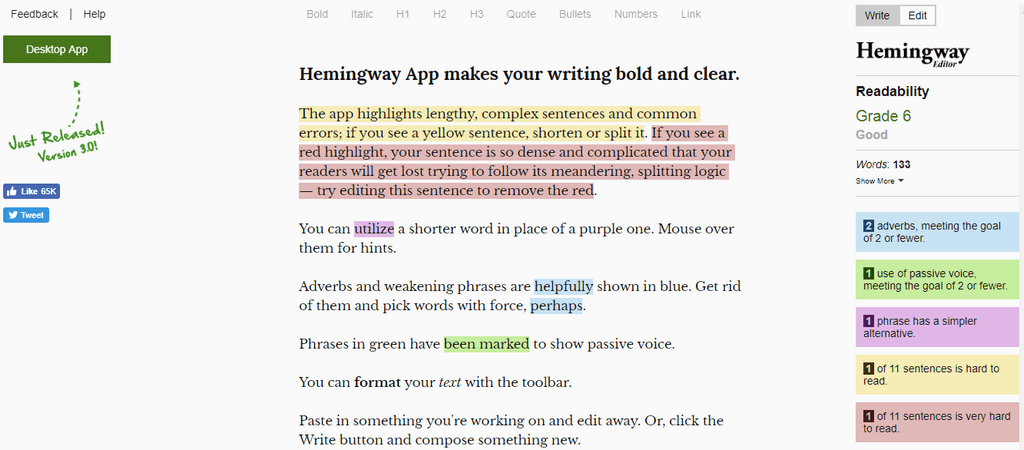

Include a meta-data for better ranking
This is the on-page SEO that search engines like Google will be using to display results in the SERPs. It’s also how Google chooses what to display. Their importance has declined over the years, but they are still a core foundation of your site’s SEO.
This is your prime opportunity to try to rank for a desired keyword or keyword phrase. We’ll now go through where you should be using your keywords.
On-page Meta Data Elements
- Titles – this is the <h1> tag of your web page and will show up as the main title in the SERPs. It’s usually just the main title field in your KB software. This is indexed by search engines.
- Slug – this is the permanent URL of your page which should contain minimal words, ideally just your keyword or keyword phrase. It’s indexed by search engines. You should be able to edit it in your knowledge base software.
- Meta Description – This is the short piece of text that you see in your results when you search for something. If you don’t set a meta-description then one will be automatically created from the first part of your article. This isn’t always ideal because often it will be cut off mid-sentence and may not be appealing to searchers. Customizing your meta-description will attract more readers and allow you to put relevant keywords in it.
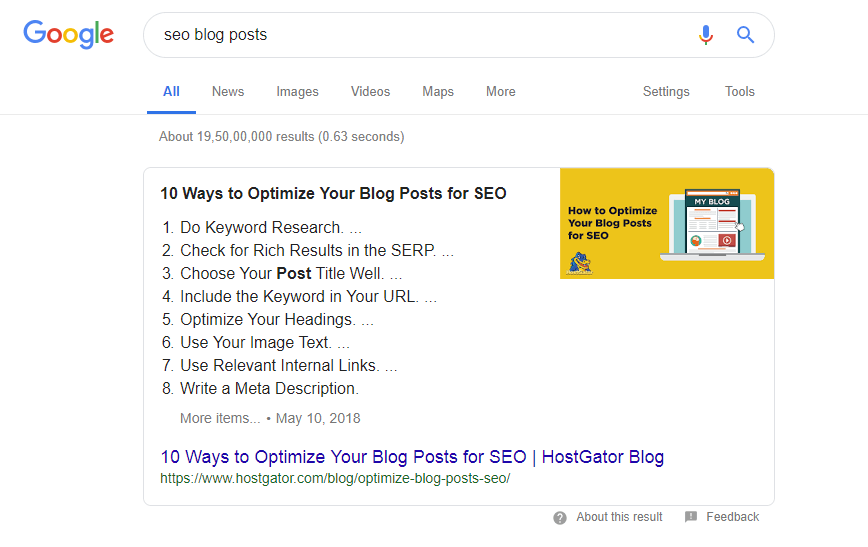

Document360 provides an easy way to do this through its platform, along with setting an SEO title and tags.
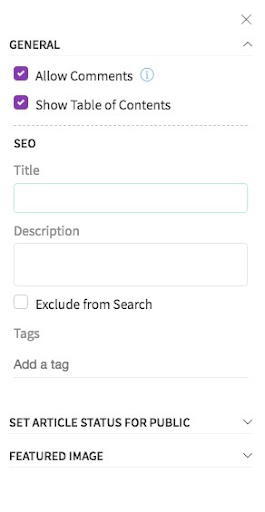

- Images – a much-overlooked opportunity for SEO optimization. If you use any images in your content, include the keyword you’ve chosen in your ‘alt text’ which should be customizable. They will show up in the image results when someone searches for that query.
- Body – include the actual keyword or keyword phrase you’ve chosen in the main text of your article. Try to just pick one keyword for each piece of content. Try to include it a few times, and use alternative versions if you can and it feels natural.
Link juice
Link juice is a term used to describe the links between your website and others in the industry, as well as links within your website linking to other parts of your site. Links are important to help Google understand more about your website and where it sits within the industry. If it is linked to reputable websites with good rankings, then it will also get an SEO boost because Google will perceive it as more useful and valuable.
Internal links also improve SEO, again because it gives Google more context about your website. However, don’t be tempted to put loads of external and internal links in your articles as this may downgrade your SEO. Instead, stick to 2-3 per 1000 words and ideally avoid any links in your first paragraph. Document360 lets you easily hyperlink to external pages or internally with just a few clicks.
Images boost SEO
Always include some images in your knowledge base article. At the very least this should include a featured picture. Imagery helps to keep knowledge-based articles from being too lengthy and dry. A simple screenshot can help users a lot more than a long description.
Any images (and video) that appear on your page must be tagged with relevant keywords and include a description. As already mentioned, Google doesn’t have the full ability to ‘see’ an image or video, so it relies on tags and descriptions for context. This may change in the future as image recognition advances.
Yoast is a good all-rounder SEO tool that can be freely installed via WordPress. For images, it provides reminders to use, tag, and describe them. It will also tell you if your article ranks well for SEO against a certain keyword, if you’ve used a keyword too much or if you have too many links.


Does length matter?
The jury is out on what length of articles makes a difference when optimizing SEO because Google often changes the requirement for this. Digital marketing guru Neil Patel recommends posts of 400-500 words long but this is likely to change (and change again) shortly.
Your best bet is to stick to a mix of different lengths to try to cover all bases. Plus, if you only stick to one length your articles may miss out key sections that add value.
What’s in a URL?
A long time ago, there was a recommendation to include keywords in main headings and URLs. This isn’t so much the case anymore. Neil Patel suggests it might even negatively impact your ranking.
However, it’s worth ensuring that your URLs are relevant and logical. This helps your users as well as Google. They also shouldn’t be duplicated elsewhere (or if they are, use something called a canonical URL to tell Google of the duplicate).
Give articles a refresh
Updating your articles means they remain useful to your customers, with no broken links and up-to-date advice. It also encourages Google’s crawlers to return and potentially boost your SEO.
Make articles part of your wider marketing
No knowledge base article should be an island – they must be linked to and shared as part of a wider marketing plan. Posting new articles on social media improves their trustworthiness in Google’s eyes. Plus, having an active social media presence adds further SEO brownie points.
Web traffic is another indicator of a good web page, so prompting customers to visit your knowledge base regularly by sharing it via email can improve SEO. Paid advertising is another option, but remember it isn’t as effective as organic search rankings. You also need to have your SEO foundations laid first, to stop yourself from paying through the nose for keywords.
Try to get included in the Google Knowledge Graph
One key part of optimizing your knowledge base SEO is making sure you claim as much real estate in the SERPs (search engine results page) as you possibly can. This is decided by Google based on the way you mark up your content.
The Google Knowledge Graph is how Google connects users with richer information right on the results page, without them having to click through a link to find what they need. Information is presented as a Knowledge Graph Card and is constantly being developed to provide better results.
Take the example of searching for a particular company. This now comes up on the right-hand side with all of the company information listed right in the SERPs.
Here is the result for 20th Century Fox:


As well as making the result richer, the Knowledge Graph also helps you discover information that is related to your original search.
So how does this apply to your knowledge base? When people are searching for queries related to your product, your site can come up in the featured snippet of the Knowledge Graph. Just take searching for ‘create filters in Gmail’.


Google’s very own knowledge base comes up as the main result. Users can interact with this content right there in the SERPs, or click through to the knowledge base if they want to learn more.
There is no certain way to get Google to include your site in the Knowledge Graph. However, it helps to present your content in bullet points and numbered lists because these are often used in the snippet (see the Gmail example above).
A constant work in progress
SEO best practice often changes, because search engines don’t want people to trick the system. Therefore it’s worth checking sites such as Search Engine Land for new updates. Mobilegeddon is one such development that may have caught some people unaware. Checking for updates every few months will mean you’re not caught out.
In this day and age SEO isn’t something you can afford to ignore. Especially when you consider the amount of effort and resources that have already gone into building your knowledge base – so give it the best shot by optimizing your SEO. Don’t sell yourself short by failing to SEO your knowledge base articles.





